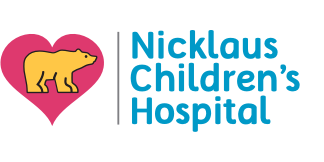- Parents Home
- Para Padres
- Allergy Center
- Asthma Center
- Cancer Center
- Diabetes Center
- Diseases & Conditions
- Doctors & Hospitals
- Emotions & Behavior
- First Aid & Safety
- Flu Center
- Food Allergy Center
- General Health
- Growth & Development
- Heart Health
- Homework Help Center
- Infections
- Newborn Center
- Nutrition & Fitness Center
- Play & Learn Center
- Pregnancy Center
- Q&A
- Recipes
- School & Family Life
- Sports Medicine Center
- Videos
- Kids Home
- Para Niños
- Asthma Center
- Cancer Center
- Diabetes Center
- Feelings
- Getting Help
- Health Problems
- Health Problems of Grown-Ups
- Heart Center
- Homework Center
- How the Body Works
- Illnesses & Injuries
- Kids' Medical Dictionary
- Movies & More
- Nutrition & Fitness Center
- Puberty & Growing Up
- Q&A
- Recipes & Cooking
- Relax & Unwind Center
- Stay Safe Center
- Staying Healthy
- Staying Safe
- Videos
- Teens Home
- Para Adolescentes
- Asthma Center
- Be Your Best Self Center
- Cancer Center
- Diabetes Center
- Diseases & Conditions
- Drugs & Alcohol
- Expert Answers (Q&A)
- Flu Center
- Homework Help Center
- Infections
- Managing Your Medical Care
- Managing Your Weight
- Nutrition & Fitness Center
- Recipes
- Safety & First Aid
- School & Work
- Sports Center
- Stress & Coping Center
- Videos
- Your Body
- Your Mind
A to Z: Paronychia
Paronychia (par-uh-NIK-ee-uh) is an infection that occurs around the nails and usually goes away completely with treatment.
More to Know
Paronychia starts with damage to the skin around the nail, often from pushing back the cuticle, frequent manicures, biting off a hangnail, or thumb-sucking. This lets germs get under the skin and cause an infection. It most commonly affects fingers but sometimes can occur in toes.
The infected area can become swollen, red, and painful, and a pus-filled blister (abscess) may form. Usually, a paronychia is no big deal and can be treated at home by soaking the infected nail in warm water for 20 minutes a few times a day. The paronychia should heal on its own in a few days.
If an abscess forms, it may need to be drained by a doctor. Rarely, the infection can spread to the rest of the finger or toe and lead to bigger problems that need further treatment.
Keep in Mind
To help prevent paronychia, don't pick or bite around nails, don't cut nails too short, don't push cuticles back, and wear rubber gloves when washing a lot of dishes or coming into contact with chemicals.
All A to Z dictionary entries are regularly reviewed by KidsHealth medical experts.

© 1995- The Nemours Foundation. KidsHealth® is a registered trademark of The Nemours Foundation. All rights reserved.
Images sourced by The Nemours Foundation and Getty Images.

